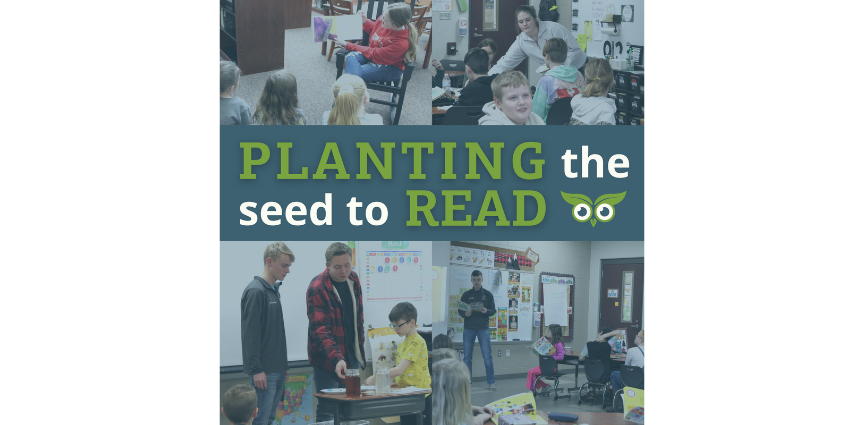
Did you know March is National Agriculture Month?
But did you know that March is also National Reading Month!
When I was in the classroom, our FFA chapter implemented an FFA activity to celebrate both!
PLANTING THE SEED TO READ was an activity we conducted to instill a love of reading in elementary students (K-6) by reading books and designing lessons to teach students where their food comes from.
During this event, FFA members traveled to over 20 different elementary classrooms and conducted agricultural literacy lessons to 300+ K-6 students revolving around the following children’s books: (1) From Milk to Cheese by Bridget Heos, (2) Right This Very Minute by Lisl H. Detlefsen, and (3) How Did That Get In My Lunchbox by Chris Butterworth. Over 150 students then received free books as part of the lesson and 15 new agricultural children’s books were added to the elementary library.
This might seem like quite the undertaking to accomplish with everything else you have on your plate, not to mention expensive, but let me break it down for you…
LIVING TO SERVE GRANT
Our FFA members filled out a Living to Serve grant to fund purchasing the books and supplies necessary to conduct this activity. As I mentioned in the Paying for the POA blog post, our chapter frequently filled out this grant and received over $10,000 in aid over the decade I was in the classroom. They are super simple to fill out with the year-long grant application opening up in April.
DETERMINE BOOK SERIES
We chose three different books because we had difficulty sourcing over 150 of the same book and wanted books of varying skill level so we could reach students K-6. We landed on From Milk to Cheese for Pre-K and kindergarten, Right This Very Minute for third and fourth grade, and How Did That Get In My Lunchbox for first, second, fifth and sixth grade.
DESIGN LESSONS
Students in my Agricultural Business class (juniors and seniors) designed lessons with each individual book being the basis of the lesson. We created simple lesson plans and resources that could easily be given to any student who was assigned the lesson.
Since we were at the mercy of when elementary teachers could fit us into their day, we had to pull in 45 different FFA members who were either in one of my classes during the designated lesson timeslot or in a study hall. With our school being K-12 this was easily accomplished. If you were in a separate location than your elementary school, a more condensed schedule would be necessary.
All of the lessons, slides and resources my students used when designing these resources are here: How Did That Get In My Lunchbox Lesson Plan, From Milk to Cheese Lesson Plan and Right This Very Minute Lesson Plan.
BOOKS & BRANDING
Once the books arrived at the school, our students placed stickers on the inside cover of the book. This allowed parents to know who donated the books and continued the exposure of agriculture education and FFA well beyond the timespan of the original activity.
PRACTICE & LESSON DELIVERY
Our school had a 30 minute Wildcat Time at the end of every day where students could travel to other classrooms, similar to a study hall. This allowed me to have all presenters attend a practice so they could see how to conduct the 30-minute lesson.
Throughout the process, it was extremely important to communicate regularly with the elementary teachers since we were using their class time to conduct this event. We had three students conduct each lesson, and like I said previously, we had students sign up during their study hall or agriculture class. Since our students were out a decent amount for FFA events, whenever possible, I tried to not pull kids from their academic classes.
This program was a huge success for my students and was very well received by the elementary students and staff. Our chapter also included this activity on our National Chapter Award that resulted in the FFA chapter being recognized as a Models of Excellence Top 10 Chapter in the nation at the National FFA Convention in 2022.
This activity can easily be modified for you and your students. Reach out to info@owlsnestresources.com with any questions and best of luck!
If you’re looking for other ways to educate elementary students about agriculture, read the From Ear to Everything blog and download six FREE lessons on the corn industry!
